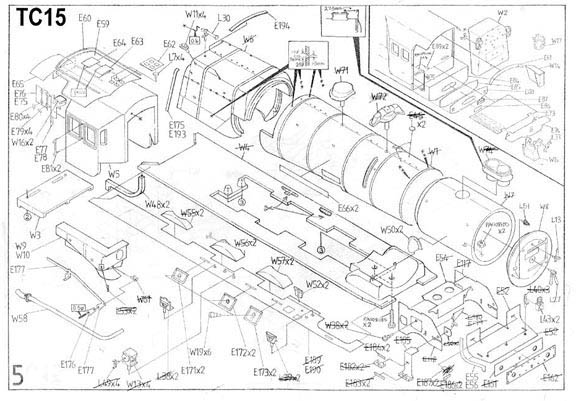

The building of the 'Super D' having reached an advanced stage, I felt it time to consider what to do next, start the baseboard and track work or select another loco to build (it now being August 2006). Eventually the decision was to build another locomotive. Given the wide choice available, what should it be? Well if you have read my first account of railway modelling, you may recall me enthusing over express engines on the Tamworth mile straight. Foremost among these were the Stanier Pacifics of the Duchess variety (strictly they are Coronation Class Pacifics).
Now this is where we talk seriously complicated to build. These are the largest passenger locomotives built to work on Britain's railways (approximately 75 long) and they are legend among steam railway enthusiasts. Though not all would admit the are the best engines built for our railways, simply because they are not London & Scottish Railway (LMS) enthusiasts. When it comes to size with complicated motion and valve gear, they hold the baton. The decision to tackle this one was not taken lightly and when I first opened the box containing the kit (September 2007), I was as they say gob smacked. The array of etches, white metal castings and lost wax castings, told me I had probably bitten off more than I could chew. When I took the first look at the building instructions, it only heightened the feeling (see sample illustration below). However, onward and upward - just get on with it, I told myself. The Duchess chosen was City of Litchfield, built in 1944 at the LMS Crewe Works. She was unusual, in that she should have been built as a streamliner, but in order to easy maintenance during the war years, he was built as non streamlined, but had a streamlined tender. Having covered 1,353,526 miles, she was withdrawn in September 1964 and cut up at West of Scotland Shipbreaking, December 1964. This was a relatively short life for a steam engine, but dieselisation was well advanced by this time.
The picture below is the loco I hope to produce from the kit. To ease myself into the build, I started with the tender chassis helped by Phil's jig. Having completed the chassis, I continued with the build of the tender body. Building the complete tender took around fifteen hours, physically it is much larger than the 'Terrier' locomotive.
